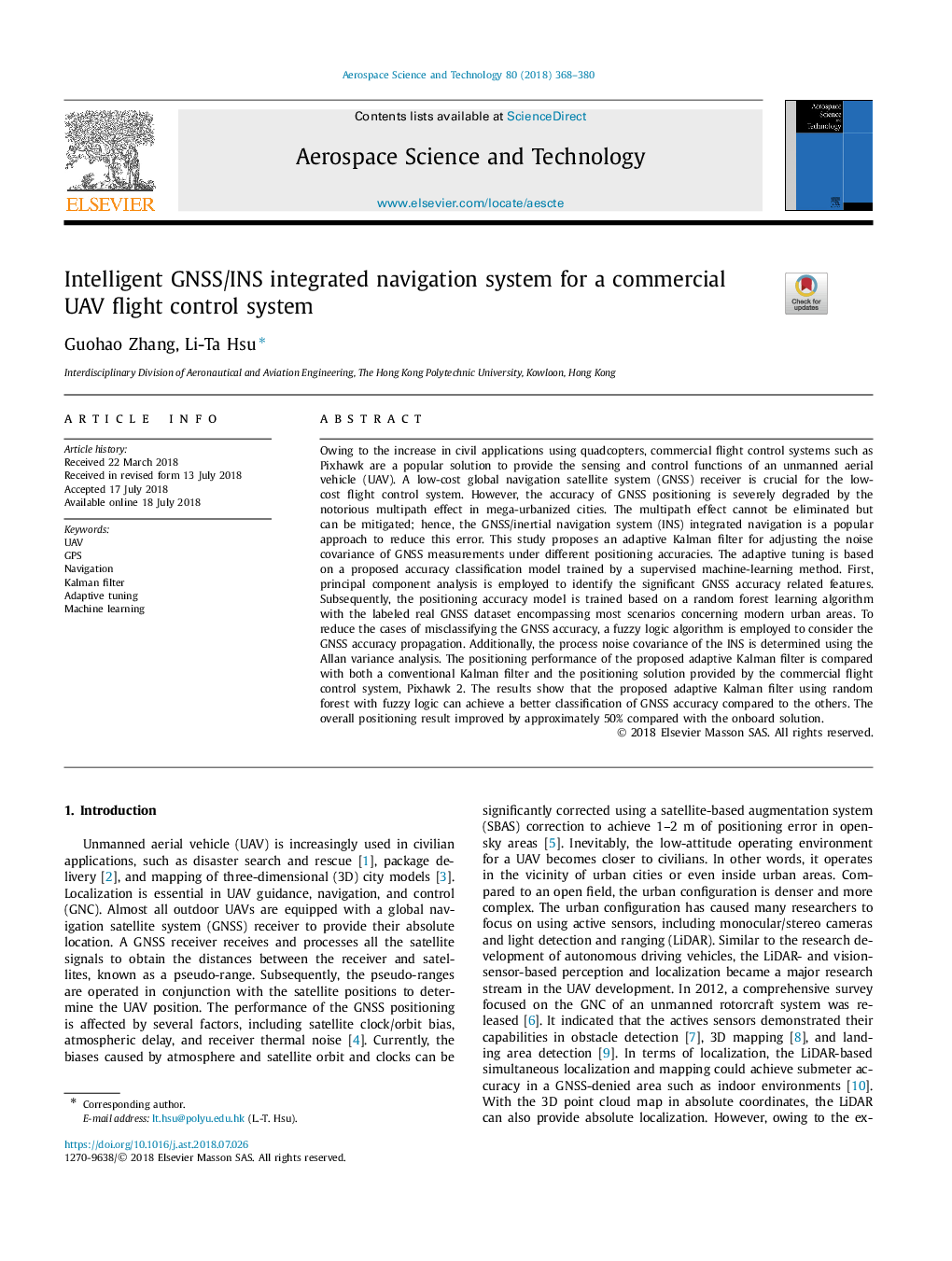| Article ID | Journal | Published Year | Pages | File Type |
|---|---|---|---|---|
| 8057282 | Aerospace Science and Technology | 2018 | 13 Pages |
Abstract
Owing to the increase in civil applications using quadcopters, commercial flight control systems such as Pixhawk are a popular solution to provide the sensing and control functions of an unmanned aerial vehicle (UAV). A low-cost global navigation satellite system (GNSS) receiver is crucial for the low-cost flight control system. However, the accuracy of GNSS positioning is severely degraded by the notorious multipath effect in mega-urbanized cities. The multipath effect cannot be eliminated but can be mitigated; hence, the GNSS/inertial navigation system (INS) integrated navigation is a popular approach to reduce this error. This study proposes an adaptive Kalman filter for adjusting the noise covariance of GNSS measurements under different positioning accuracies. The adaptive tuning is based on a proposed accuracy classification model trained by a supervised machine-learning method. First, principal component analysis is employed to identify the significant GNSS accuracy related features. Subsequently, the positioning accuracy model is trained based on a random forest learning algorithm with the labeled real GNSS dataset encompassing most scenarios concerning modern urban areas. To reduce the cases of misclassifying the GNSS accuracy, a fuzzy logic algorithm is employed to consider the GNSS accuracy propagation. Additionally, the process noise covariance of the INS is determined using the Allan variance analysis. The positioning performance of the proposed adaptive Kalman filter is compared with both a conventional Kalman filter and the positioning solution provided by the commercial flight control system, Pixhawk 2. The results show that the proposed adaptive Kalman filter using random forest with fuzzy logic can achieve a better classification of GNSS accuracy compared to the others. The overall positioning result improved by approximately 50% compared with the onboard solution.
Related Topics
Physical Sciences and Engineering
Engineering
Aerospace Engineering
Authors
Guohao Zhang, Li-Ta Hsu,
